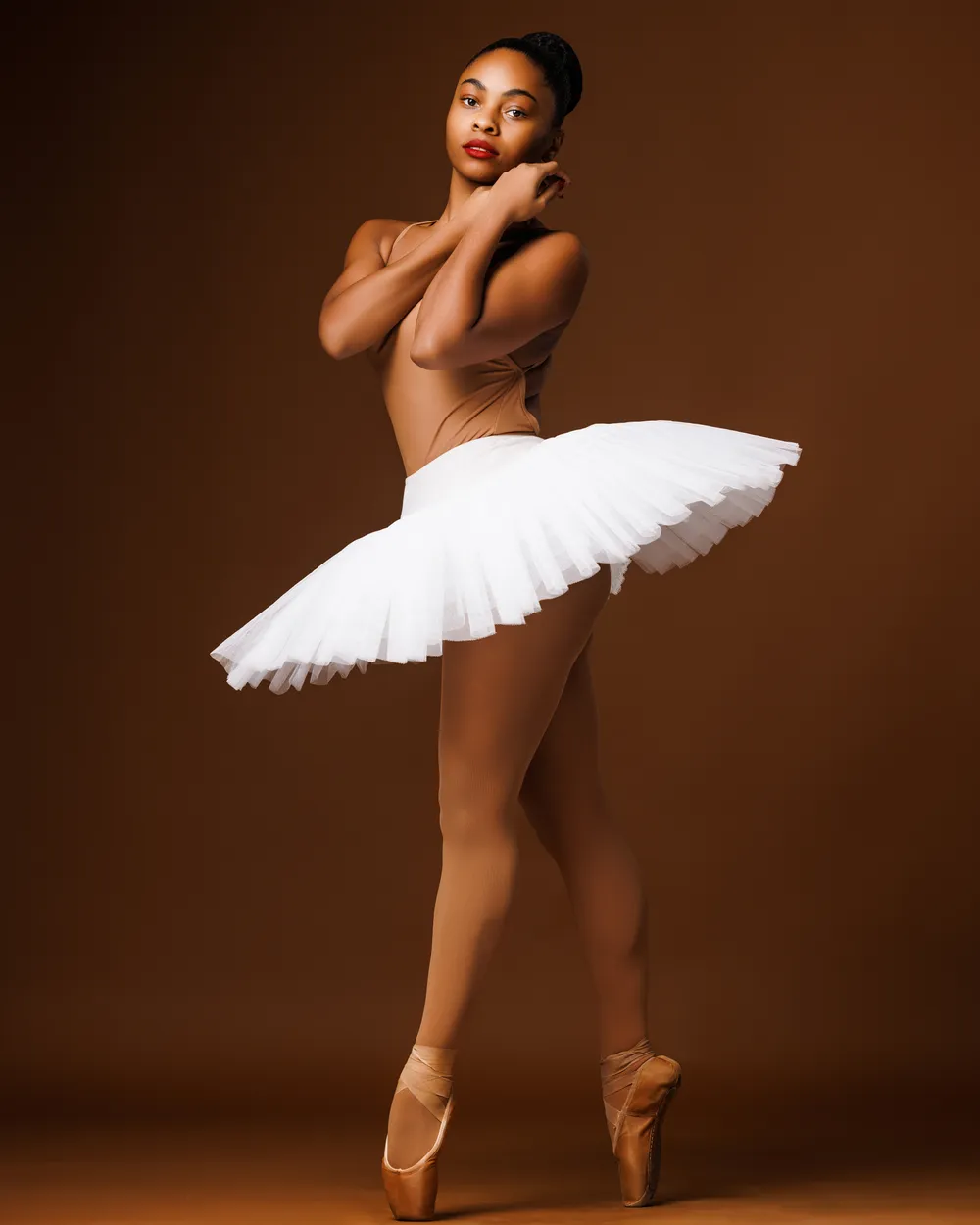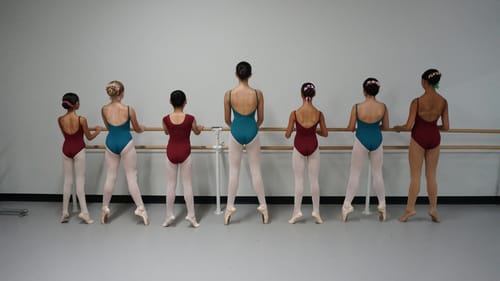Stay in the Loop
BSR publishes on a weekly schedule, with an email newsletter every Wednesday and Thursday morning. There’s no paywall, and subscribing is always free.
What’s the pointe?
Philadelphia ballerinas share the challenging magic of life in pointe shoes

Tap dancers and break dancers and Irish dancers all pop up on their toes as a trick, but only ballerinas rise to pointe and stay there to perform feats of grace and strength. It’s unbelievably hard to do, and sometimes it hurts, but in spite of everything, ballerinas seem to love their pointe shoes.
Ballet is a pretty esoteric art form, but children still head to local ballet studios at age three or four. Pointe shoes come later, usually ages 10 to 12. In September, Kristina Windom, principal of the School of the Philadelphia Ballet, invited me to visit her students in pre-pointe class and those just moving onto pointe shoes.
The school primarily trains professional dancers, a tradition that goes back to 18th-century France, and for many of the students, ballet is a family tradition as well. Their mothers, grandmothers, or aunts had danced. Others start at a local studio. But they fall in love with ballet at the summer intensives, where schools provide hours of focused instruction from the students’ idols in the company.
Technique comes first
For Windom, the hardest part of teaching is keeping the students off pointe until they have developed the technique to do it safely. “For kids, all they see is shoes, shoes!” Feet need to be strong, but the power comes from the hips, she said. Dancers need to develop coordination and alignment along with core strength. Windom uses holistic somatic training that engages the mind in visualization to work the whole body. Dancers cross-train too, but ultimately, it comes down to a lot of work at the barre—"lots of relevés.”
When the moment comes, it’s a rite of passage. The school brings in a fitter to make sure the students have the proper shoes. Windom said that the shoe should not provide too much support because the students have to develop the muscles in their feet and ankles. Then, “you sit down, you give them a tutorial about sewing,” because, as she explains, dancers sew those pretty ribbon ties onto the shoes themselves.

“My first pair of pointe shoes, I slept in them! I went to bed with them, and I woke up with them on!” Windom reminisced. “It’s a passage for us. Your dream is in color at this point. It is a really beautiful moment for a young dancer.”
What is a pointe shoe?
A pointe shoe is delicate satin on the outside and a box made of muslin, paper mâché, and glue on the inside to hold a dancer's toes upright and provide a flat surface—the platform—to stand on. A shank supports the arch, and a suede sole keeps the dancer from slipping. A quick search on the Internet turns up pages of pointe shoes, but only a few seem to make the cut with local dancers. Freed is the archetypal shoe made by hand in London to conform to each dancer’s foot. It has been a favorite in America since Balanchine required them for his dancers, but they are so fragile that they last only days. Bloch shoes are machine-made, with customizable options, and last a bit longer.
For a while, it seemed that engineering had saved the day. Gaynor Minden designed its pointe shoes with modern materials for ergonomics and longevity. Eddy Tovar, the director of Philadelphia Ballet II (PB II) and the person in charge of sourcing the shoes for the Philadelphia Ballet, said that many of the dancers in the company wore Gaynor until the closure of its American factory during the pandemic. “The European version is completely different,” he said, “and most people here in the United States don’t like them. Even the material is different in the European shoe.” So, it was back to muslin and paste.

Whatever the brand, it will be expensive. A pair of pointe shoes costs anywhere from $100 to $160; Tovar has a budget of $150,000 for the company, which includes things like ribbons, which come separately, and extra shoes that each dancer takes home for the summer. He budgets another $15,000 for PB II. BalletX has paid around $20,000 per year in recent years, though they budget $25,000. Companies with tighter finances and fewer performances, like the Chocolate Ballerina Company, rely on their dancers to pay for their own shoes.
The dancers’ quest
Windom was wistful when she said, “I think dancers are in the constant quest to find the perfect shoe, but the perfect shoe doesn’t exist, and that’s a beautiful thing. It’s the quest, right?” The Philadelphia Ballet invites the fitters to the studio, but dancers in smaller companies work with the shops directly. It’s harder for some than for others. Philadelphia School of Dance Arts founder Joan Myers Brown said that the shops in Philadelphia do not give students of color the same consideration, but the Rosin Box, a shop on Sansom Street owned by the Jenkins family, was an exception. Sadly, the shop closed during the pandemic.
In their quest for the perfect shoe, the dancers of BalletX had strong opinions. Savannah Green loves her Freeds because “they allow me to feel light and weightless, like I’m just kind of floating up there, by my own toes.” Skyler Lubin started out on Blochs but is now also a Freed fan as well, though not without problems, especially since the pandemic. The size has been off, though they have her measurements, and the shoes have little bumps inside that make it harder to turn or balance and can give her a blister. She’s sticking with them for now, though, because when the shoe is good, “I feel like it’s almost my foot, and I don’t have a shoe on.”
All of the dancers miss the Rosin Box. Francesca Forcella credits them with finding her the perfect shoe. She was a Freed fan, she said, but the inconsistency was too frustrating. The Rosin Box suggested the Bloch, and she loved it. “I like where it falls, I like the stretch satin, I like the shape it makes my foot.” She would change nothing, she said, except to have the shoe in her skin color.
Shoes that match the dancers
A shoe in her skin tone matters for dancer Ashley Simpson as well. She said she wore Gaynors as a student because they were less expensive and lasted longer than other shoes. Now, she says, she still loves them because she can roll through the shoe (go from pointe to the floor with a flexible, graceful foot). And, she said, “I stuck with them because they had the skin-colored pointe shoes before other brands started diversifying their ranges of colors.”
Increasingly, companies are offering shoes in darker skin tones, but the options are limited and special order, often taking months to arrive. And Chocolate Ballerina Company founder Chanel Holland pointed out that shoes jump right from pink to mocha brown, skipping everything between. Even when the dance shoe is a compatible color, she said, the tights may not match, so the dancers still have to blend in the color with makeup.
A “magical feeling”
From a seat in the audience, the dancers in their glittering tutus seem magical, but I was surprised that the dancers felt the same way. For Green, “There’s this magical feeling where you feel weightless and kind of limitless. You can be on the ground, but you can also just float.” Lubin agreed: “It’s not like a human thing; it is like this magical thing for a ballet dancer. And it’s just gorgeous. People watch and are like, how is this possible?”

Sometimes, they love it because it’s hard to do. Simpson loves the exhilaration and the fear that comes with pointe and saying to herself, “Okay, maybe I can push myself here, and do something I never thought I’d be able to do.” Forcella loves the challenge of the added difficulty of a pirouette on the tiny platform of the pointe shoe.
A barrier to the barre
When I asked the dancers what could make their shoes better, they all spoke at once: lower the prices. The shoes are prohibitively expensive, and the dancers were keenly aware of who doesn’t get to dance because of the cost. Lubin remembered a dancer at the Miami City Ballet school. “She was doing a really hard variation, and she was dancing on these shoes that had died. And she was getting through it, but the teacher came up to her and was like, why are you wearing these shoes? And she was like, I can’t afford to buy any more shoes.” When pressed, the dancers suggested a smoother interior for the shoes, but the worst thing they could imagine was not having the money for pointe shoes at all.
Above: Dancer Leanna Lyles of Chocolate Ballerina Company. (Photo by Ray Valdez Photography.)
Sign up for our newsletter
All of the week's new articles, all in one place. Sign up for the free weekly BSR newsletters, and don't miss a conversation.
 Camille Bacon-Smith
Camille Bacon-Smith